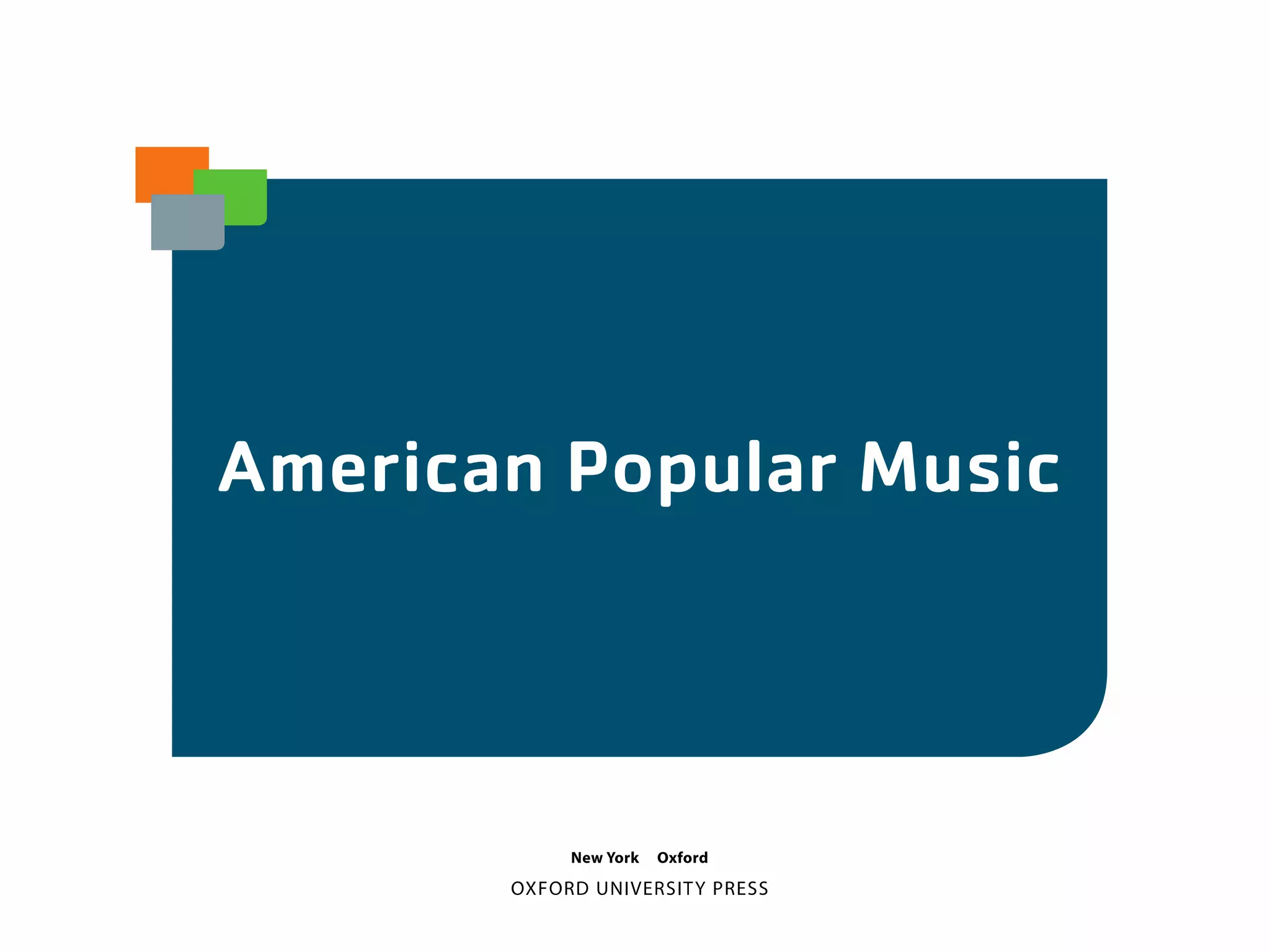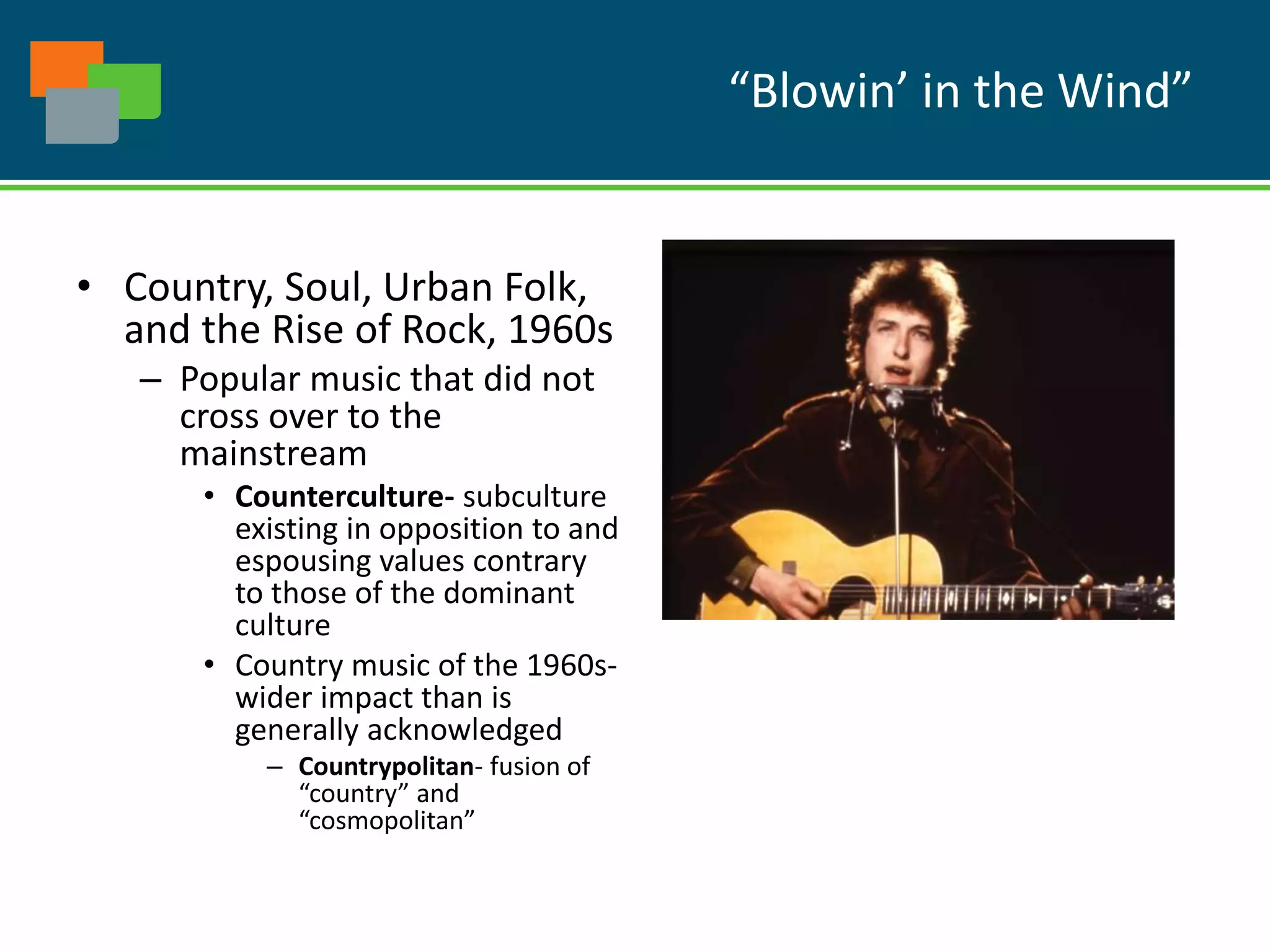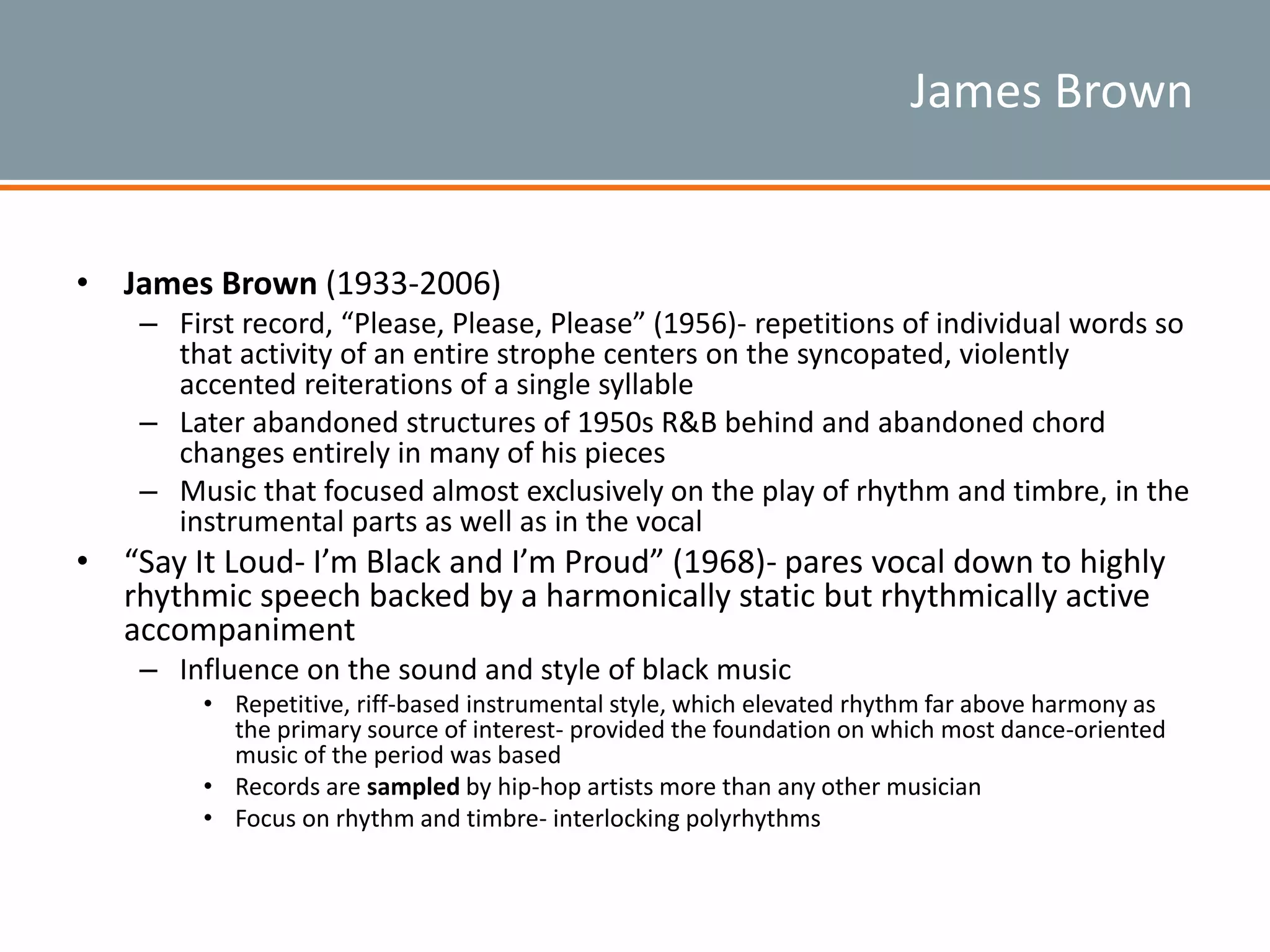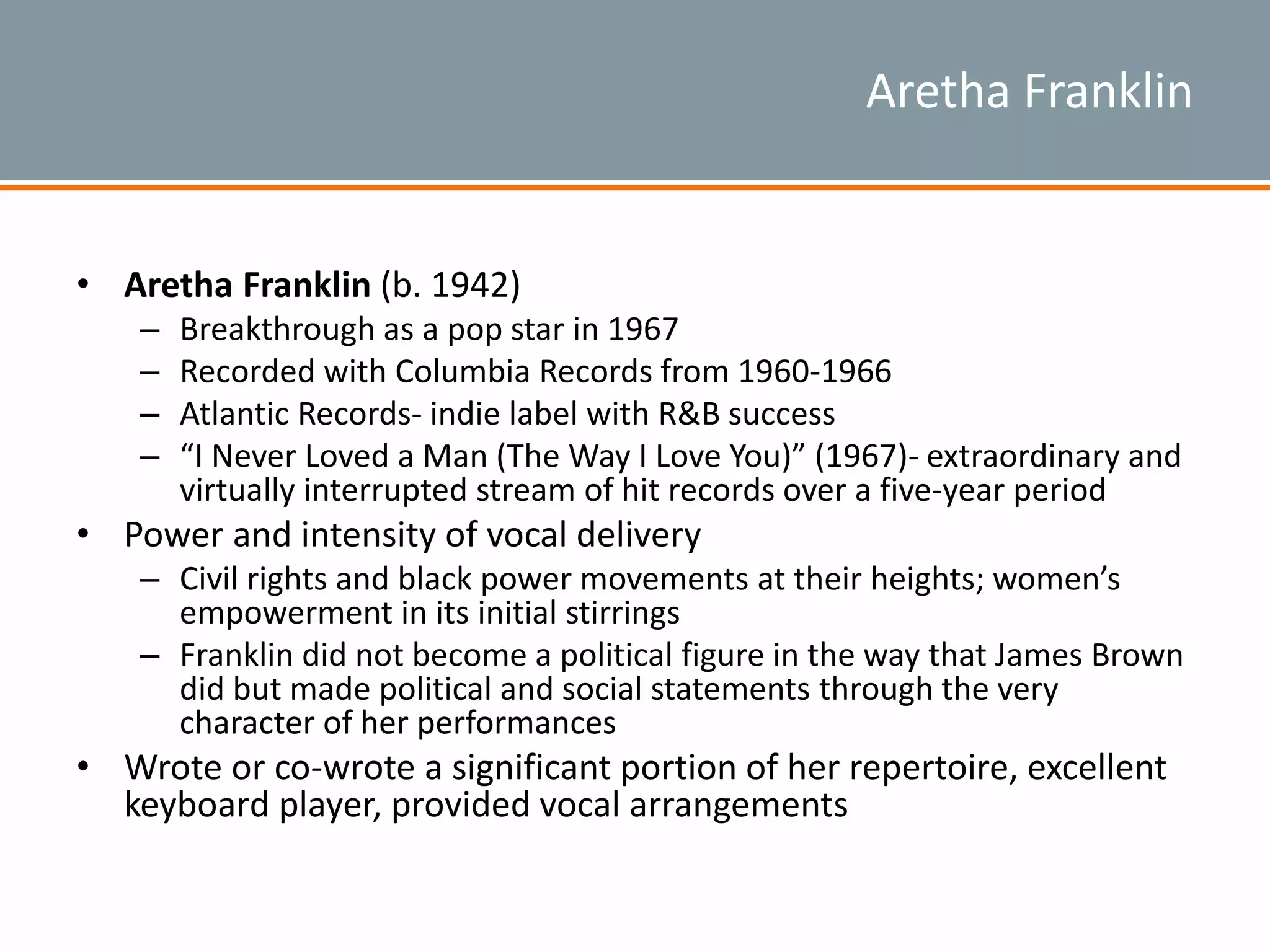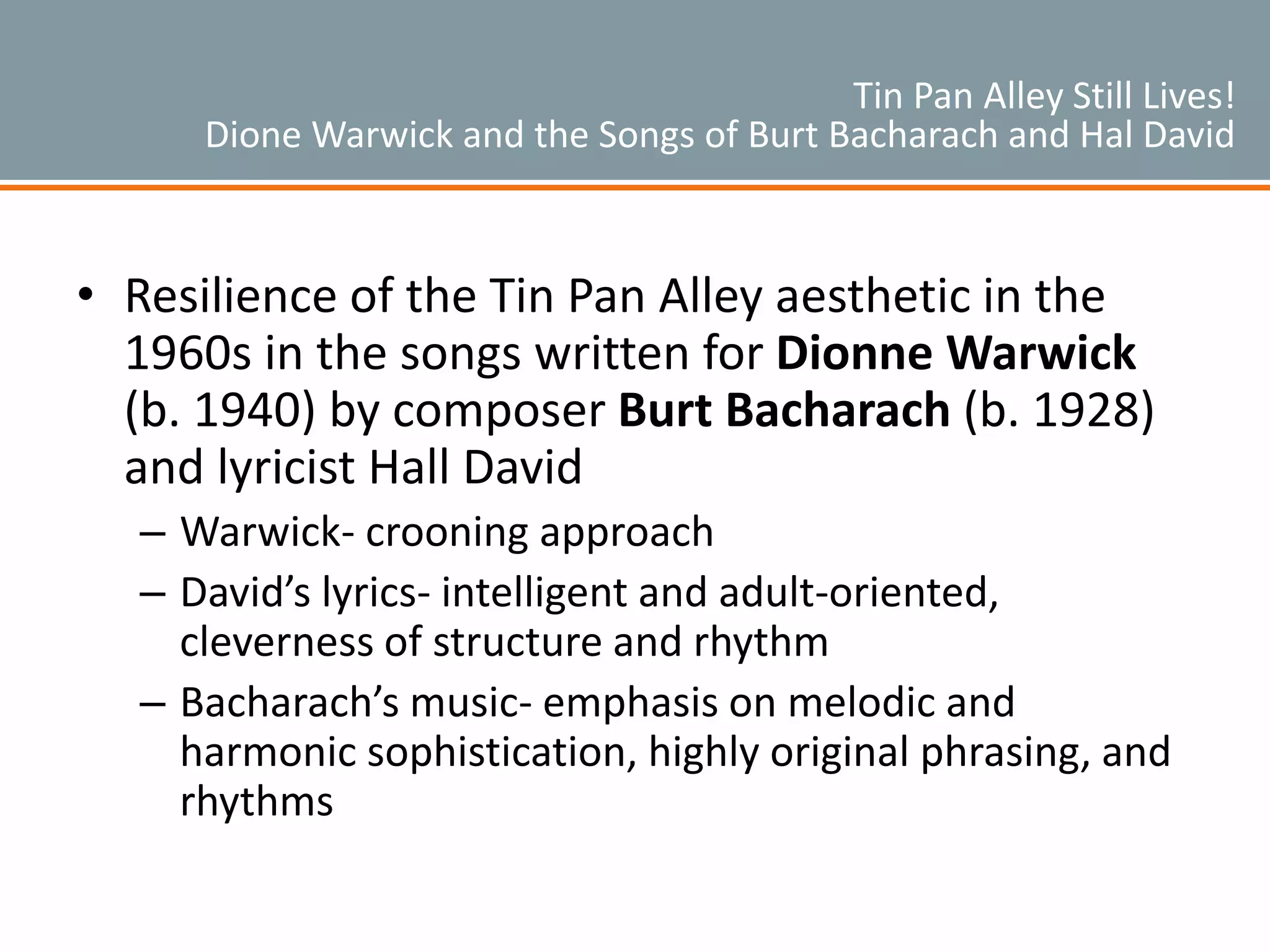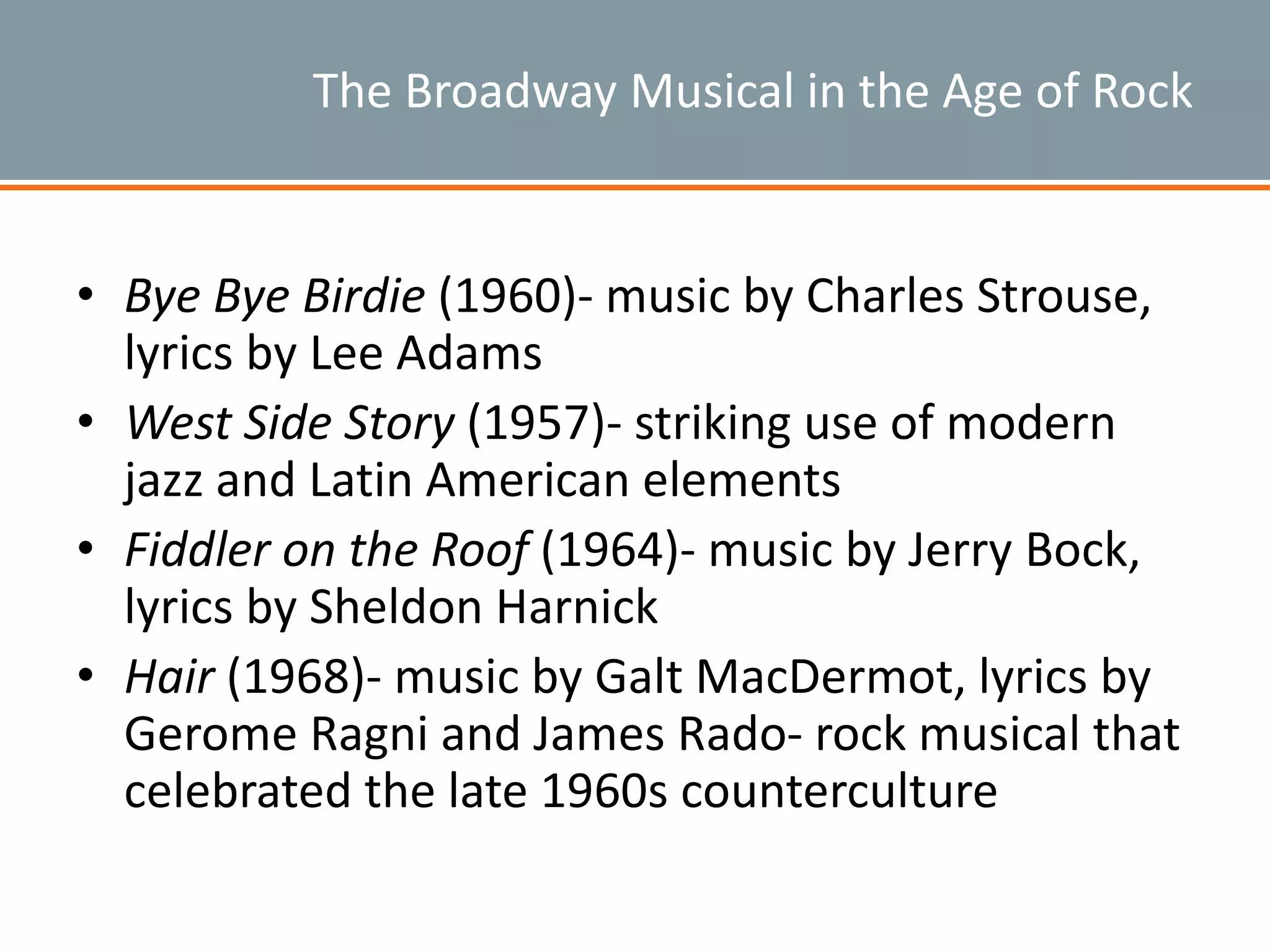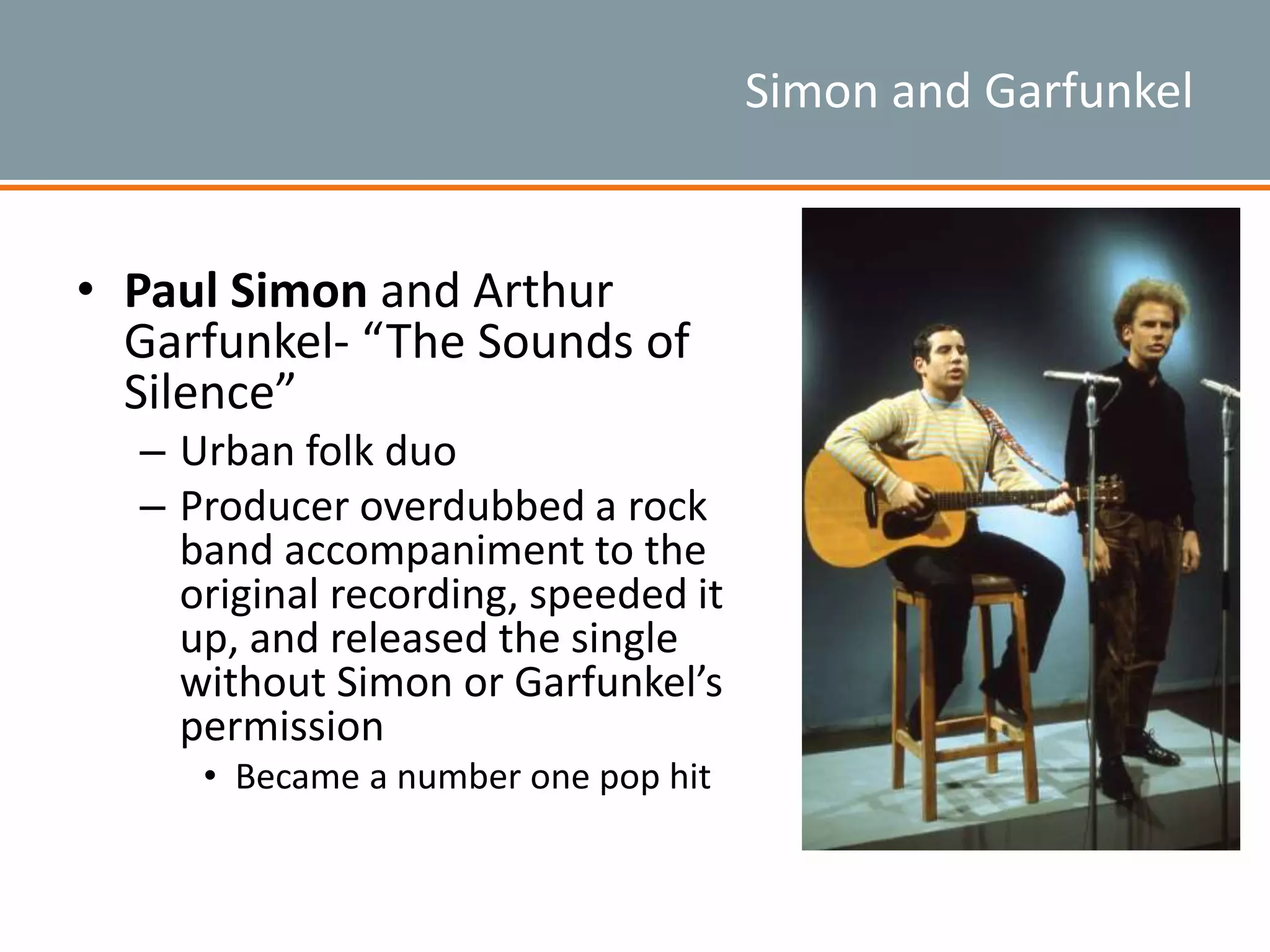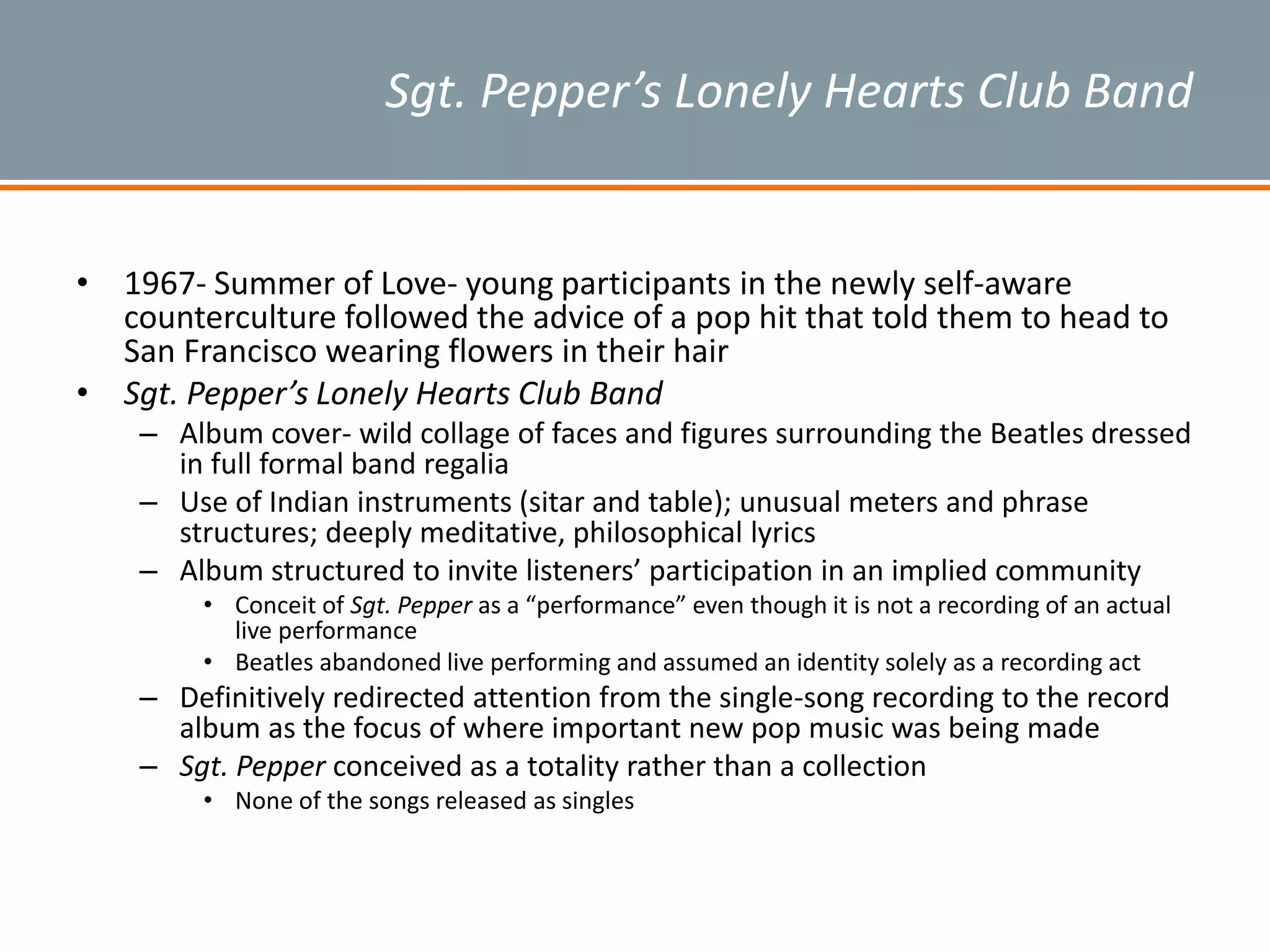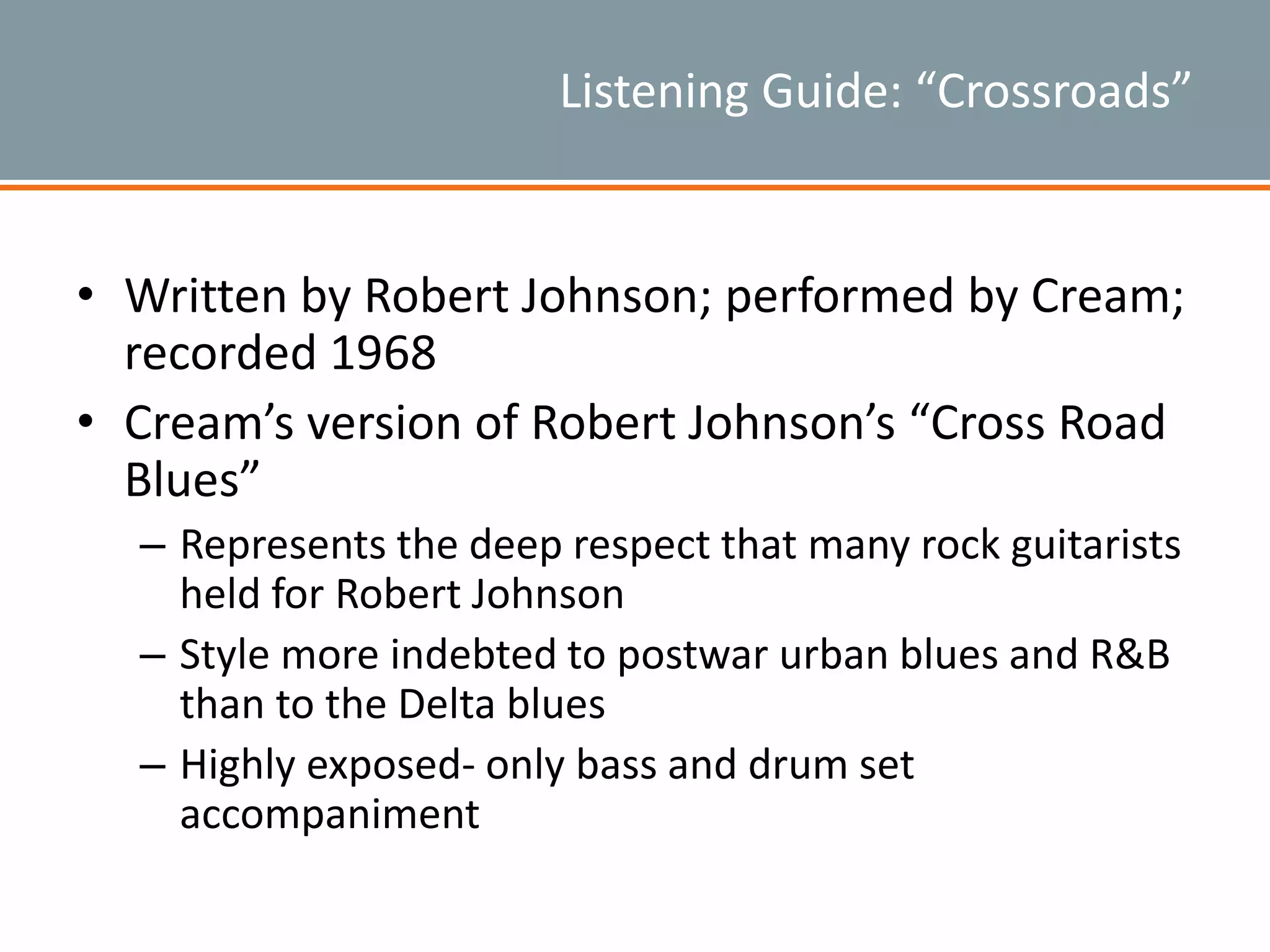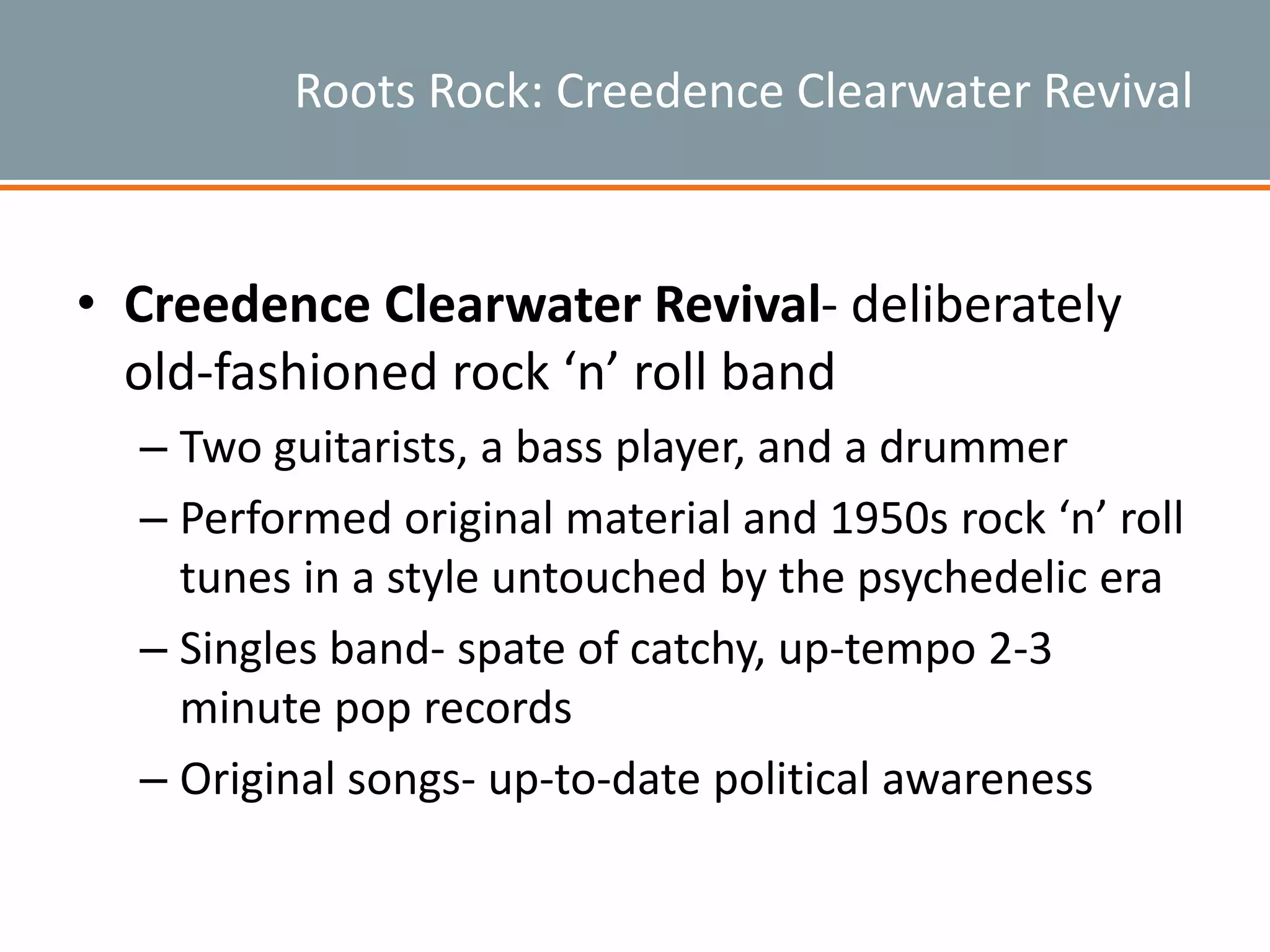This document provides an overview of major developments in popular music genres such as country, soul, and folk during the 1960s. It discusses influential artists like Patsy Cline, Ray Charles, Sam Cooke, James Brown, Aretha Franklin, Bob Dylan, and The Beatles. The rise of genres like soul music and the Nashville Sound expanded country's mainstream popularity. Artists like Dylan and The Beatles also influenced the growth of genres like folk rock and psychedelic rock during this transformative decade for popular music.
